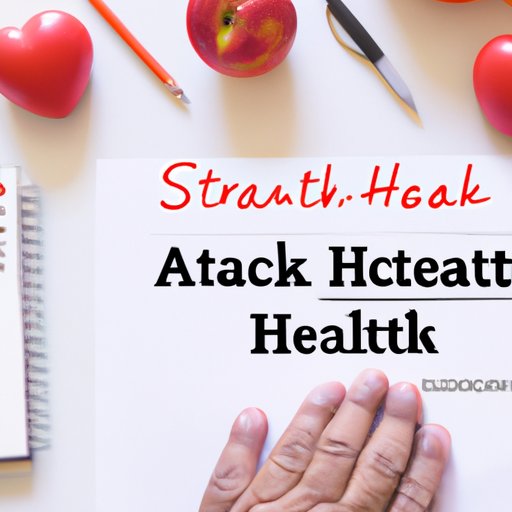I. Introduction
Heart attacks can happen to anyone, anywhere, at any time. According to the American Heart Association, someone in the United States has a heart attack every 40 seconds. That’s more than 800,000 people every year. However, quick action can mean the difference between life and death. In this article, we will discuss how to stop a heart attack in 30 seconds using immediate action and prevention tips.
II. Immediate Action Plan
The first few minutes after a heart attack are critical. Immediate intervention can help reduce damage to the heart muscle and improve the chances of survival. If you or someone else is experiencing a heart attack, follow these steps:
1. Calling for Medical Assistance
Call 911 or the emergency number in your area for immediate medical assistance. Tell the operator that someone is having a heart attack and provide your location.
2. Administering Aspirin
Aspirin can help prevent blood clots, which can cause a heart attack. Chew and swallow a regular, uncoated aspirin (not enteric-coated or buffered) as soon as possible after calling for medical assistance. This may help reduce the severity of the heart attack.
3. Performing CPR
If the person is not breathing, perform cardiopulmonary resuscitation (CPR). CPR can help maintain blood flow to vital organs until medical help arrives. If you are not trained in CPR, the 911 operator can guide you through the process.
4. Using an Automated External Defibrillator
If an automated external defibrillator (AED) is available, use it immediately. An AED can help restore a normal heart rhythm, which can save a life.
III. Diet and Lifestyle Changes
While immediate intervention is crucial, prevention is equally important. Making smart choices and adopting healthy habits can reduce the risk of heart attacks. Here are some ways to prevent heart attacks:
1. Quitting Smoking
Smoking is a major risk factor for heart attacks. Quitting smoking can reduce the risk of heart attacks and improve overall health. Seek support from family, friends, and healthcare professionals to quit smoking.
2. Reducing Stress
Stress can contribute to the development of heart disease. Find healthy ways to manage stress, such as meditation, yoga, or spending time with loved ones.
3. Exercising Regularly
Exercise can help improve heart health by reducing the risk of high blood pressure, high cholesterol, and obesity. Aim for at least 150 minutes of moderate-intensity aerobic exercise per week.
4. Following a Healthy Diet
Eating a diet rich in fruits, vegetables, whole grains, and lean protein can help reduce the risk of heart attacks. Limit intake of processed foods, sugary drinks, and saturated and trans fats.
IV. Recognition of Symptoms
Early detection is crucial in preventing the damage caused by a heart attack. Knowing the symptoms of a heart attack can help you take action quickly. Common symptoms of a heart attack include:
- Chest pain or discomfort
- Shortness of breath
- Discomfort in other areas of the upper body, such as the arms, back, neck, jaw, or stomach
- Cold sweat, nausea, or lightheadedness
If you or someone else experiences these symptoms, seek immediate medical attention.
V. Alternative Remedies
Alternative remedies, such as herbs and supplements, can complement traditional medical treatment and help improve heart health. Here are some alternative remedies that may be beneficial:
- Garlic
- Omega-3 fatty acids
- Pomegranate
- Hawthorn
- Magnesium
Before taking any alternative remedies, talk to your healthcare provider to ensure they are safe and right for you.
VI. Raising Awareness
Raising awareness about heart attacks is crucial in preventing them. Here are some ways you can make a difference:
1. Joining Local Support Groups
Joining local support groups can provide support and information for those affected by heart disease. The American Heart Association offers online support networks and local support groups.
2. Participating in Charity Events
Participating in charity events, such as walkathons or bike rides, can raise awareness and funds for heart disease research and prevention.
3. Spreading the Message Over Social Media
Sharing information on social media can reach a broad audience and encourage others to take action to prevent heart attacks.
VII. Conclusion
A heart attack can happen to anyone, but quick action can save lives. Administering an immediate action plan, making smart choices, recognizing symptoms, using alternative remedies, and raising awareness can help prevent heart attacks. Take action today to protect your heart and the hearts of those around you.
Remember, stop a heart attack in 30 seconds following the steps mentioned in this article and improve the quality of your life and those around you.
